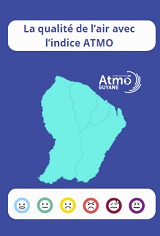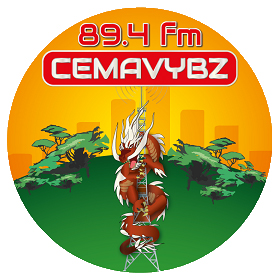Blada.com
vendredi 19 décembre
Boîtes aux lettres
Courrier des lecteurs
Petites annonces
Emploi / Formation
Covoiturage
Infos citoyennes
Infos citoyennes
20/09/22
Dr Fredrik Terlutter, nouveau médecin coordinateur du GHT
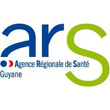 Médecin pendant quatre ans au Chog, il succède au Dr Pierre Ménard. L’une de ses principales missions sera de structurer les filières de soins entre les centres hospitaliers de Cayenne, Kourou et de Saint-Laurent du Maroni.
Médecin pendant quatre ans au Chog, il succède au Dr Pierre Ménard. L’une de ses principales missions sera de structurer les filières de soins entre les centres hospitaliers de Cayenne, Kourou et de Saint-Laurent du Maroni.
Quelles sont les missions du médecin coordinateur du GHT ?
Ma mission, c’est de trouver un chemin commun entre les trois hôpitaux publics pour aller vers le CHU de Guyane en 2025. Le territoire est vaste, différent d’une région de l’Hexagone où les GHT existent aussi. Il faut donc adapter l’idée de GHT et de CHU au territoire. Le but est de trouver un projet médical commun qui nous mène au CHU, tout en respectant les spécificités des établissements. Un projet médical qui respectent les règles fixées par le ministère tout en répondant aux besoins de soins de la population de Guyane.
 Quel est votre parcours ?
Quel est votre parcours ?
Je suis arrivé en Guyane en 2017. J’ai travaillé deux ans en service de médecine à Saint-Laurent du Maroni, avec le Dr Franklin Samou Fantcho, en collaboration avec le Pr Félix Djossou, notamment dans le contexte de l’infectiologie. J’ai travaillé dans l’unité Covid puis je suis devenu responsable du centre de dépistage mobile, puis du centre de vaccination pour l’ouest de la Guyane. C’est dans ce contexte-là que j’ai créé de premiers contacts entre l’ouest et Paramaribo et je suis devenu responsable des relations internationales au Chog. J’ai piloté plusieurs projets : mise en place d’un agent de l’état-civil au sein du Chog pour améliorer l’enregistrement des naissances étrangères au Chog, avec l’ancien ambassadeur de France à Paramaribo, et le projet de renforcer l’ancrage transfrontalier du Chog, en lien avec l’hôpital d’Albina.
Comment avez-vous été désigné à ce poste ?
En début d’année a été évoqué la succession du Dr Pierre Ménard, qui a fait un grand travail pour le GHT. Ce sont les trois directeurs d’hôpitaux, puis les trois présidents des commissions médicales d’établissement, et le collège médical de la Guyane qui m’ont désigné. C’est une décision commune.
Vous évoquez la nécessité d’avoir un regard impartial sur les trois hôpitaux. Est-ce parce qu’il existe une forme de concurrence entre les trois établissements publics ?
Ce n’est pas de la concurrence. C’est plutôt un problème de communication, pour comprendre ce qui se passe dans les autres établissements que le sien. Chaque établissement a la volonté de faire avancer le projet. Mais avec la distance, il manque parfois une communication fluide. Là, je fais 500 km en deux jours pour parler avec les gens. Avec tous les challenges qui existent dans chaque hôpital, il est normal qu’on n’ait pas toujours une vision globale. J’essaie d’agir comme un facilitateur, de faire connaître les besoins de chaque établissement, et les ressources que représenterait une plus grande coopération entre eux.
Une large partie de votre mission portera sur la structuration des filières. Pouvez-vous préciser ?
L’idée est de trouver le moyen d’améliorer la coopération entre les hôpitaux, au niveau de la prise en charge des patients. Par exemple, à Kourou, il y a un spécialiste de la chirurgie de la main. On peut imaginer de concentrer les patients concernés à Kourou.
Pourquoi, comment cela se passe-t-il aujourd’hui ? Est-ce qu’un chirurgien moins spécialisé ailleurs va faire lui-même l’opération ou chercher une évasan pour son patient ?
Exactement ! Il y a beaucoup d’évasan vers les Antilles ou l’Hexagone, alors qu’il peut y avoir une solution locale, avec le même niveau de soins. C’est juste un manque de connaissance de cette possibilité. Il faut donc chercher des leaders dans chaque filière, des médecins qui guident les projets sur le terrain et les fassent mieux connaître. On va donc trouver des leaders dans les filières, qui tiendront les projets, organiseront les équipes, réuniront autour de la table les chefs de chaque établissement.
Quelle sera la méthode de travail pour trouver une organisation fluide de ces filières, à l’échelle du territoire ?
Cela dépend des spécialités. En infectiologie, le Pr Djossou a fait un travail énorme depuis vingt-deux ans. Il vient régulièrement à Saint-Laurent du Maroni. Il y a des échanges d’internes, de praticiens… Les soins critiques, la diabétologie, la néphrologie sont aussi des disciplines qui montrent la voie de ce que la coopération apporte au quotidien aux patients et aux professionnels. On a donc des exemples où il y a déjà coopération entre les trois hôpitaux. Dans d’autres filières, il y a beaucoup de turn over parmi les professionnels. Il faut donc les guider, les présenter aux équipes, leur expliquer le fonctionnement.
Vous souhaitez donc trouver des leaders pour développer des projets médicaux et réunir les professionnels…
Exactement !
Le GHT organisait des séminaires…
Il y en a un de prévu pour décembre. Chaque groupe de travail présentera ce qu’il a fait pendant l’année. Il s’agira de discuter librement de ce qui a marché, de ce qui marche moins bien. Il faut améliorer les échanges. Si les membres de chaque filière se réunissent pendant deux ou trois jours, ça crée une cohésion d’équipe et une cohésion à l’échelle du territoire.
Votre action sur la coopération pourra-t-elle se poursuivre à l’échelle du GHT ?
J’ai désormais deux casquettes : celle de coordinateur médical du GHT et celle sur la coopération. Il faut poursuivre avec le Suriname mais également aller plus loin, en travaillant sur l’intégration du GHT, et plus tard du CHU, dans la grande région. On regarde souvent l’Hexagone, mais il faut regarder aussi ce qu’on peut faire avec nos voisins. Cette casquette sur la coopération est donc complémentaire.
S’agissant de l’universitarisation en vue du CHU, quelle sera votre rôle au côté des PU-PH ?
Le plus important, c’est que les praticiens amènent leurs avis, avec leurs compétences et leurs informations. Je pourrai avoir un rôle consultatif et les aider dans certaines décisions. J’assisterai à certaines réunions.
Comment le GHT va-t-il travailler avec les professionnels de ville ?
Il y a le besoin de communiquer aussi à destination aux agents du système de santé de Guyane hors des hôpitaux. Si on revient à l’exemple de la chirurgie de la main, on voit bien tout l’intérêt que les professionnels de santé de ville sachent que Kourou s’est spécialisé dans ce domaine, pour permettre une prise en charge rapide et de qualité. On organisera des réunions entre praticiens de la ville et des hôpitaux.
Vous avez rencontré les dirigeants de l’ARS, vendredi dernier ?
L’ARS a une place importante, elle s’assure de l’équilibre de l’offre de soins sur le territoire, et est l’ambassadrice des projets de développement de la santé en Guyane. Il faut la nourrir par des projets médicaux cohérents. Quand on est médecin sur le terrain, on n’a pas toujours la perspective administrative. Mais les porteurs de projets, ce sont vraiment les médecins. Ce sont eux qui proposent.
Quel est votre programme des premières semaines ?
Faire le tour des trois hôpitaux. Après ma prise de poste, nous avons diffusé des e-mails. Mais le plus important, c’est le contact personnel, pour créer le lien de confiance, voir les professionnels dans les hôpitaux, se réunir avec les chefs de pôle, avec les médecins, les écouter. On essaiera des tenir de premières réunions de brainstorming, pour aller plus concrètement dans les projets de chaque filière. Il faut prendre le temps de le faire. C’est la base.
 Doctor for four years at the Chog, he succeeds Dr Pierre Ménard. One of his main missions will be to structure the care pathways between the hospitals of Cayenne, Kourou and Saint-Laurent du Maroni.
Doctor for four years at the Chog, he succeeds Dr Pierre Ménard. One of his main missions will be to structure the care pathways between the hospitals of Cayenne, Kourou and Saint-Laurent du Maroni.
What are the missions of the GHT coordinating doctor?
My mission is to find a common path between the three public hospitals to go to the University Hospital of Guyana in 2025. The territory is vast, different from a region of France where the GHTs also exist. It is therefore necessary to adapt the idea of GHT and CHU to the territory. The goal is to find a common medical project that leads us to the CHU, while respecting the specificities of the establishments. A medical project that respects the rules set by the ministry while meeting the healthcare needs of the population of Guyana.
 What is your background?
What is your background?
I arrived in French Guiana in 2017. I worked for two years in the medical service at Saint-Laurent du Maroni, with Dr Franklin Samou Fantcho, in collaboration with Pr Félix Djossou, particularly in the context of the infectiology. I worked in the Covid unit then I became responsible for the mobile screening center, then the vaccination center for western Guyana. It was in this context that I created my first contacts between the west and Paramaribo and I became responsible for international relations in the Chog. I led several projects: setting up a civil status agent within the Chog to improve the registration of foreign births in the Chog, with the former French ambassador to Paramaribo, and the project of strengthen the Chog's cross-border roots, in conjunction with the Albina hospital.
How were you appointed to this position?
At the beginning of the year, the succession of Dr. Pierre Ménard, who did a great job for the GHT, was mentioned. It was the three hospital directors, then the three presidents of the establishment medical commissions, and the medical college of Guyana who appointed me. It is a joint decision.
You mention the need to have an impartial view of the three hospitals. Is it because there is a form of competition between the three public establishments?
It's not competition. It's more of a communication problem, to understand what's going on in establishments other than his own. Each institution has the will to move the project forward. But with the distance, it sometimes lacks smooth communication. There, I travel 500 km in two days to talk with people. With all the challenges that exist in each hospital, it is normal that we do not always have a global vision. I try to act as a facilitator, to make known the needs of each institution, and the resources that greater cooperation between them would represent.
A large part of your mission will relate to the structuring of sectors. Can you specify?
The idea is to find a way to improve cooperation between hospitals in terms of patient care. For example, in Kourou, there is a specialist in hand surgery. One can imagine concentrating the patients concerned in Kourou.
Why, how is it going today? Will a less specialized surgeon elsewhere do the operation himself or seek an escape for his patient?
Exactly! There is a lot of escape to the Antilles or France, while there can be a local solution, with the same level of care. It is just a lack of awareness of this possibility. We must therefore look for leaders in each sector, doctors who guide the projects in the field and make them better known. We will therefore find leaders in the sectors, who will manage the projects, organize the teams, bring the heads of each establishment around the table.
What will be the working method to find a fluid organization of these sectors, at the scale of the territory?
It depends on the specialties. In infectiology, Professor Djossou has done enormous work for twenty-two years. He comes regularly to Saint-Laurent du Maroni. There are exchanges of interns, practitioners... Critical care, diabetology, nephrology are also disciplines that show the way of what cooperation brings to patients and professionals on a daily basis. So we have examples where there is already cooperation between the three hospitals. In other sectors, there is a lot of turnover among professionals. It is therefore necessary to guide them, introduce them to the teams, explain to them how it works.
So you want to find leaders to develop medical projects and bring professionals together...
Exactly!
The GHT organized seminars…
There's one scheduled for December. Each working group will present what it has done during the year. It will be a question of freely discussing what worked, what works less well. Trade needs to be improved. If the members of each sector meet for two or three days, it creates team cohesion and cohesion across the territory.
Will your action on cooperation be able to continue at the level of the GHT?
I now have two hats: that of medical coordinator of the GHT and that of cooperation. It must continue with Suriname but also go further, by working on the integration of the GHT, and later the CHU, in the greater region. We often look at France, but we also have to look at what we can do with our neighbours. This hat on cooperation is therefore complementary.
Regarding university education for the CHU, what will be your role alongside the PU-PH ?
The most important thing is that practitioners bring their opinions, with their skills and information. I could have an advisory role and help them in certain decisions. I will attend some meetings.
How will the GHT work with city professionals?
There is also a need to communicate to agents of the Guyana health system outside of hospitals. If we go back to the example of hand surgery, we can clearly see the importance of city health professionals knowing that Kourou has specialized in this field, to allow rapid and quality care. Meetings will be organized between city and hospital practitioners.
Did you meet the leaders of the ARS last Friday?
The ARS has an important place, it ensures the balance of the healthcare offer on the territory, and is the ambassador of health development projects in French Guiana. It must be nourished by coherent medical projects. When you are a doctor in the field, you do not always have the administrative perspective. But the project leaders are really the doctors. They are the ones who propose.
What is your plan for the first few weeks?
Go around the three hospitals. After I took office, we distributed e-mails. But the most important thing is the personal contact, to create a bond of trust, to see the professionals in the hospitals, to meet with the heads of departments, with the doctors, to listen to them. We will try to hold initial brainstorming meetings, to go more concretely into the projects of each sector. You have to take the time to do it. This is the basis.
Raccourcis

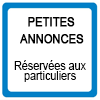
passer une petite annonce

passer une annonce de covoiturage
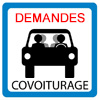
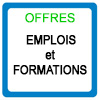
passer une annonce d’emploi
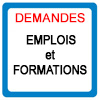
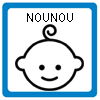
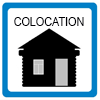
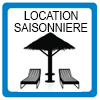
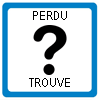
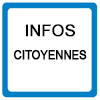
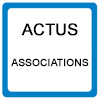
associations, postez vos actualités
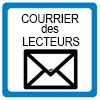
participez au courrier des lecteurs
La Guyane c’est ici
La qualité de l’Air avec
ATMO
Photothèque

Lancements 2022
Vol 259 Ariane 5



